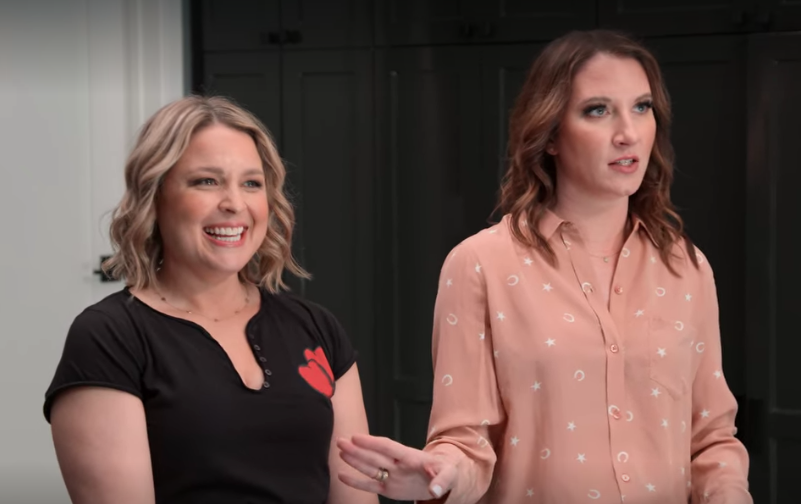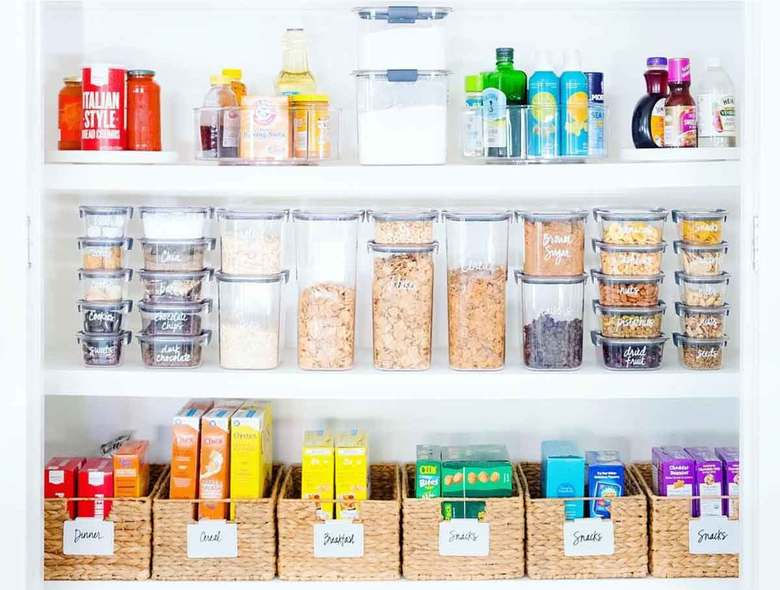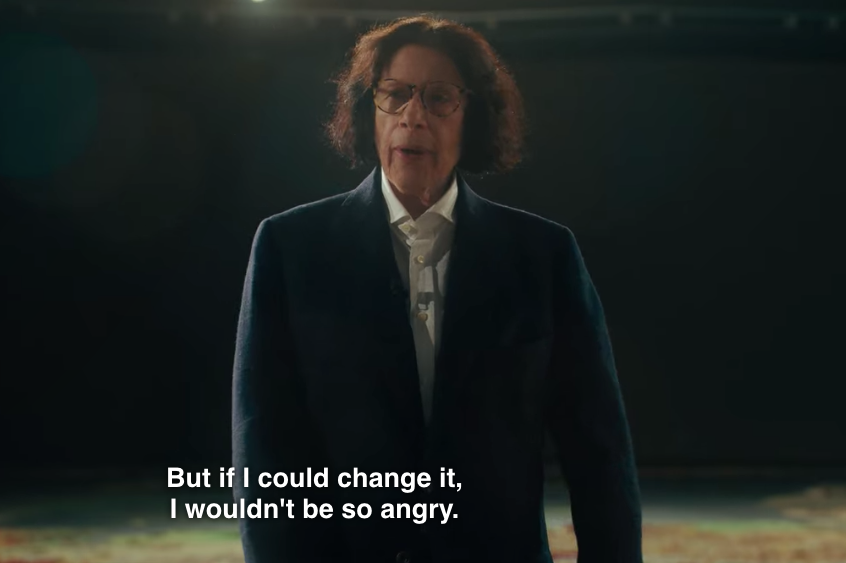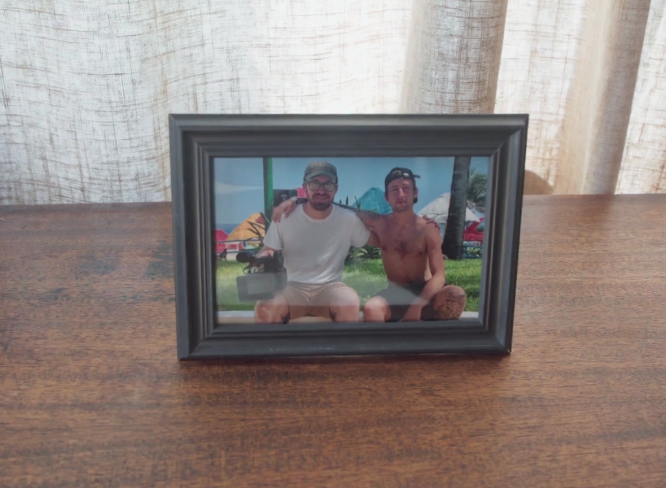THE DELIGHTFUL BANALITY OF GET ORGANIZED WITH THE HOME EDIT
- Tahnee

- Oct 22, 2020
- 6 min read
Netflix turns Instagram's premiere clutter busters into a deliciously uninspired show for people who are stuck at home and need to clean the fuck up.

You’ve probably seen the proliferation of images of immaculately organized drawers or perhaps a rainbow “shelfie” floating around Instagram in recent months (years?). It’s safe to say we have The Home Edit, an organizing duo from Nashville who’ve claimed their fame by systematizing the chaotic spaces of celebs, to thank for this. Admittedly, I don’t follow The Home Edit on IG, but I am inclined to like or save an image of a well arranged pantry for aspirational purposes. The Home Edit’s sprawling panoply of organization commodities including two books, various container products, merch and a fervent following on social media was recently parlayed into a Netflix TV series called Get Organized with The Home Edit in which the female duo made up of Clea Shearer and Joanna Teplin organize the homes of celebrities and civilians alike.
I’d be lying if I said I don’t find Get Organized with The Home Edit amusing. I’d also be lying if I said I watched without skepticism. The Home Edit combines a lot of the things I typically try to avoid; co-opting the rainbow, spending upwards of thirty dollars on a plastic drawer, mentioning OCD as shorthand for tidiness. But in its rare moments of appeal, the show can be as satisfying as only needing a single swipe of toilet paper after a great shit. Clean, considerate, efficient and a little bit funny.
Assuming you start with your best foot forward, Get Organized’s first episode is an indication that its best is...fine. The first episode follows Shearer (who speaks about 100 words for every two of Teplin’s) and Teplin as they tackle Reese Witherspoon’s Nashville costume closet which will house outfits from her former gigs like Legally Blonde and Big Little Lies (Witherspoon also produces the series). Our bubbly heroines approach the closet with Witherspoon’s requests in mind (she wants all the costume pieces to be placed together like an ensemble, rather than divided by item i.e. Shoes, Jackets, Dresses, etc. THE DRAMA!) and a carload of organizing devices fresh from The Container Store. For the first half of the episode, they waffle on where to place what and how to abide by their codified set of guidelines; “Edit, Categorize, Contain, Maintain.” This is the template for every segment, with some curveballs thrown in, such as a forced reimagining when a container bin doesn’t fit as planned. At its core, the show (and the business) operates on the homogenizing of spaces to the point where the homogenization is the aesthetic itself.

And now, let’s consider that pervasive aesthetic. Beyond the organization and compartmentalization that made them famous, The Home Edit exacts a specific (not unique, but specific) visual style prominent among the “This Girl Runs on Coffee, Wine & Amazon Prime” elites of our society (listed in Teplin’s and Shearer’s “Guilty Pleasures” on The Home Edit website are “Target trips” and “Drive-thru Starbucks”). From the cursive labels, to the rainbow coordination, The Home Edit’s look is meant to inspire not personality, but prettiness. Their organization and color coding has become a recognizable luxury item thanks to their A list clients. The brand wields kindergarten basics (think ROYGBIV, think triangle shapes and round lazy susans, think square peg square hole) that are no doubt pleasing to view, but not altogether spirited or empowering. It’s quite a soulless look, to be honest.
Organization and maybe more specifically “editing” has become a commodity all its own in the last decade. The blow out success of Marie Kondo’s “The Life-Changing Magic of Tidying Up,” and its less spiritual predecessor, the Joshua Fields Millburn/Ryan Nicodemus documentary “Minimalism” have all contributed to the aspiration of “less.” But these endeavors feel much more rounded by a sense of greater purpose attached to the action of purging and organizing. Where “Tidying Up” and “Minimalism” offers a template for every person’s comfort level, The Home Edit affixes a one-size-fits-all look to every single space they approach, no matter the client.
So, why did The Home Edit need to be a show? It didn’t. In essence, it’s a lengthy commercial with a pair of fun hosts. Get Organized with The Home Edit sits perhaps uncomfortably between self help and interior design, somehow managing to nestle inside a QVC infomercial and a TLC home makeover show. There are “Before and After” images and a big reveal of the space in each episode. However, unlike a makeover show of the TLC variety, such as Trading Spaces or Extreme Makeover Home Edition, Get Organized must contend with the reveal of transformations that are teeny tiny compared to a complete home renovation. I’ll never get over the contrived sense of awe that a family of four exhibited over the reveal of the inside of two kitchen drawers. There’s something laughably dissatisfying about the culmination of a project being simply….a rearranged closet. Or a drawer. Or a cabinet. Conversely, the organizing of a celebrity’s garage or closet is less about how well The Home Edit can put a space into order, but rather, damning evidence of just how much some of these people have. Khloe Kardashian’s garage is bursting at the seams with True’s tiny luxury vehicles, and Rachel Zoe’s walk-in closet requires that her “Capri” wardrobe be stored away to make space.
The Home Edit touts a self-coined “low bar lifestyle” which highlights the philosophy that it’s ok to fail sometimes, that the bare minimum is oftentimes enough for what the day might require. I’m cool with this. Another adage that accompanies the “low bar lifestyle” is “surviving, not thriving,” a sort of fizzy dog whistle for tired moms (which, full disclosure, I am). On the one hand, the duo’s self described “low bar life” is an attractive and charming nod to the simplicity of what they do, but on the other, “low bar life” does not make for great television. The truth is, the anticlimax of revealing a single kitchen drawer speaks to the fact that the maximum delight derived from The Home Edit can be found in a much less time consuming venture. The pleasure that The Home Edit gives us can be adequately felt by viewing an image on social media.
As I’ve said, there are dredges of gooey gratification throughout the series, like when the duo takes on a neighborhood after-school program for kids or revamps Retta’s “leisure lounge”. Viewers will undoubtedly pick and choose their favorite segments based on visual preferences, their favored celebrities and the ability to translate tips and tricks in their own homes (I, for one, prefer the transformation of pantries and fridges over closets). There are also moments of didacticism and illumination, like the impact of rolling your scarves into buns rather than folding them, and the exciting discovery that David Burtka buys pillows in the likeness of food items when he’s stressed late at night.
I am among the millions who find deep solace in tidying. Clea Shearer and Joanna Teplin, who built their business on social media after meeting in 2015, have found a way to capitalize on that comfort while taking on the persona of your most effervescent aunt. If I sound bitter or contemptuous in my criticism, if my fault-finding feels personal, I assure you, it’s not. It’s my previously confessed skepticism that you’re sensing. The television show is pleasantly mind numbing fluff, perfect for a quick hit of that dopamine goodness. There will always be satisfaction in seeing a space go from disheveled to not, and organizing can be a gratifying act of self care, no doubt. But, there is a disregard for the sickness from which symptoms like hoarding and messiness and clutter spring; relentless and mindless consumerism. Organizing is only a partial remedy to an illness like this, and that’s where my skepticism germinates. That’s what makes me raise an eyebrow at the “low bar life,” and at the pangs of comfort I feel when seeing a clear container of new pens. Suddenly, everything you have is a source of disappointment until it’s given new life in a plastic bin. We all love and have stuff, and it feels better when that stuff is under control. But prescribing organization as a means to happiness is like positing that drinking hot lemon water in the morning will make you feel better. Sure, it’s probably a nice habit to adopt, but it doesn’t address the fact that you ate an entire lasagna the night prior and you plan to do it again. I suppose I just longed for some acknowledgement of a larger issue.
I admittedly purchased four under-shelf baskets (not clear and not plastic, just FYI) after watching a few episodes of Get Organized several days ago. They have been patently beneficial to the efficiency of my closet. Maybe more than the baskets themselves, the placement and folding and compartmentalizing of my clothes - the act of taking stock - was what soothed me. Get Organized with The Home Edit although often banal, has its merits and delights, just like the act of organization itself.



Comments